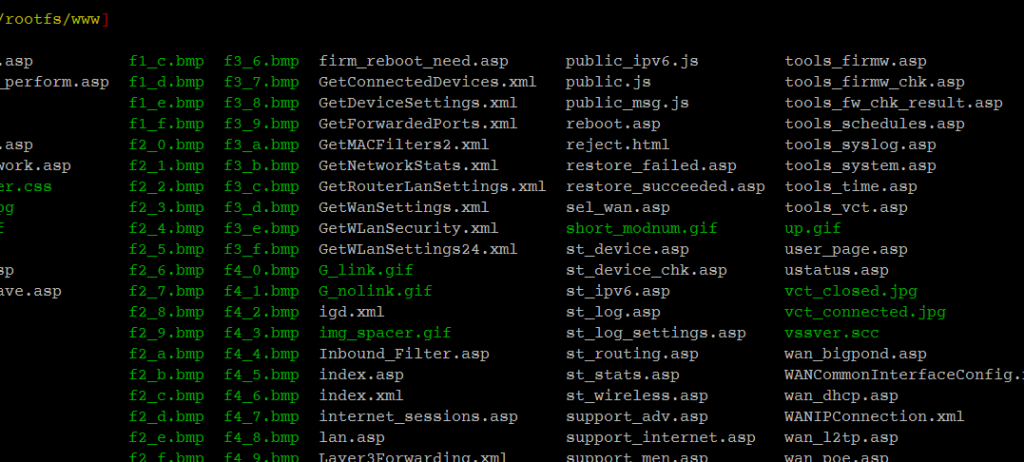Firmware Reverse Engineering, an Introduction
My latest interest has been spawned by an awesome post by Ruben Santamarta @Reversemode of IOActive. always had a rough idea what was going on with applying a firmware image to a device, but it was never anything that I investigated. After reading the article, I was ready to go! I conceptually understood what was happening… how hard could it be? Harder than I thought.
First things first, you need binwalk,
which may or may not complain about the right version of ‘magic’ for Python. If it complains, grab the most recent version of file(build and install, and make sure that you
install the bindings for Python in python). Great binwalk works, now what?
Now we decide on what to rip apart, and I picked some random D-Link firmware. I’ve deployed one of these DIR-615 units somewhere at some point, but don’t have one on hand. The initial scan went something like this:
$ binwalk DIR-615_REVC_FIRMWARE_3.13.BIN
DECIMAL HEX DESCRIPTION
-------------------------------------------------------------------------------------------------------------------
0 0x0 uImage header, header size: 64 bytes, header CRC: 0x8D5601FA, created: Tue Sep 14 04:55:47 2010, image size: 972355 bytes, Data Address: 0x80060000, Entry Point: 0x8030D000, data CRC: 0x9F3F0366, OS: Linu
x, CPU: MIPS, image type: OS Kernel Image, compression type: lzma, image name: "Linux Kernel Image"
64 0x40 LZMA compressed data, properties: 0x5D, dictionary size: 8388608 bytes, uncompressed size: 2949254 bytes
1048576 0x100000 Squashfs filesystem, big endian, version 3.0, size: 2518754 bytes, 580 inodes, blocksize: 65536 bytes, created: Tue Sep 14 04:56:05 2010
(that code box is not amazing, but you’ve already made it this far…)
So the thing that I immediately understood was that I could grab the Squashfs section pretty easily with:
$ dd if=DIR-615_REVC_FIRMWARE_3.13.BIN bs=1 count=2518754 skip=1048576 of=dir615.sqfs
file dir615.sqfs
dir615.sqfs: Squashfs filesystem, big endian, version 3.0, 2518754 bytes, 580 inodes, blocksize: 65536 bytes, created: Tue Sep 14 04:56:05 2010
That looked promising, right? This quickly turned into a case of me being out
of my depth. I basically thought I’d be able to run unsquashfs on that
resulting image, but in reality, it just died:
$ unsquashfs dir615.sqfs
Reading a different endian SQUASHFS filesystem on a
Parallel unsquashfs: Using 8 processors
zlib::uncompress failed, unknown error -3
read_block: failed to read block @0x266d4a
read_fragment_table: failed to read fragment table block
FATAL ERROR aborting: failed to read fragment table
This seems to indicate that I don’t know what’s going on, and to some extent
this is true. In particular, I don’t understand the LZMA component of the
image. I was aware of
Firmware Mod Kit,
but hadn’t used it before. After grabbing FMK, I picked up a few dependencies,
like liblzma, I was on my way.
$ ./extract-firmware.sh ../DIR-615_REVC_FIRMWARE_3.13.BIN demo
Leads to a fully extracted image. Digging around in the logs of FMK lets me
know that the unsquasfs-lzma binary was used, which makes me want to explore
some more. Part 2 to follow, dissecting how FMK got this done.
